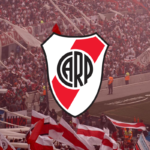


The mood is usually relaxed in Villa Urquiza, given that it remains a residential neighborhood with few nightclubs or bars. A very laid back and chill neighborhood, Villa Urquiza is far from the typical tourist path in Buenos Aires. It could be a peaceful place to settle down, if you’re looking for a strictly residential neighborhood, and like to be far from the hustle and bustle. However, for most looking for a more residential vibe in this area of the city, neighboring Belgrano will probably be a better bet. It’s still a much calmer area in the city than say downtown or Palermo, but with the added benefit of the up and coming restaurant and nightlife scene in bajo Belgrano.
Villa Urquiza was founded by Francisco Seeber in 1889. Seeber fought in the war against Paraguay and was the City Mayor from 1889 – 1890. He was also a merchant and president of the Western Railroad Company. Villa Urquiza was once three distinct neighborhoods: Villa Catalinas, Villa Mazzini y Villa Modelo.
Random Fact(s): Villa Urquiza is considered the garden of Buenos Aires due to its many tree lined streets and numerous Plazas and Parks. It is the home of many artists and musicians such as Luis Alberto Spinetta, Melingo, Alejandro Lerner and Paul Perry.
Fun fact: One of the plazas called Marcos Sastre Plaza was, oddly enough, a cemetery from 1874 until 1946.
-Teatro 25 de Mayo
-A plethora of parks, plazas and quiet neighborhood housing
Villa Urquiza’s main attraction is the Teatro 25 de Mayo, which was built in the early 1900s, and is considered the “petit Colon.” The famous tango singer Carlos Gardel performed there on several occasions, as have many world renowned theatrical groups. It is a remarkable theatre, known for its fine acoustics and world-class style and comfort. Teatro 25 de Mayo is located on Avenida Truivirato 4436.
Many old two-story houses still remain in Villa Urquiza. There are many quiet, tree-lined streets and wide avenues. There are also many plazas and playgrounds, the most famous being Plaza Echeverria, which is the center of the barrio’s festivities. In 1891, the archbishop of Buenos Aires authorized the construction of a temple for the neighborhood. Thus, the church Nuestra Señora del Carmen was built and is located on Avenida Truinvirato 4940.
(US) 910 795 2992
(AR) +54 9 11 —- —-
©Copyright 2025 Landingpadba, LLC